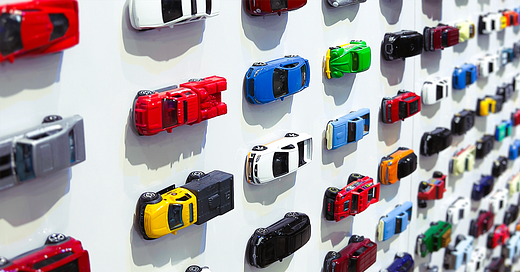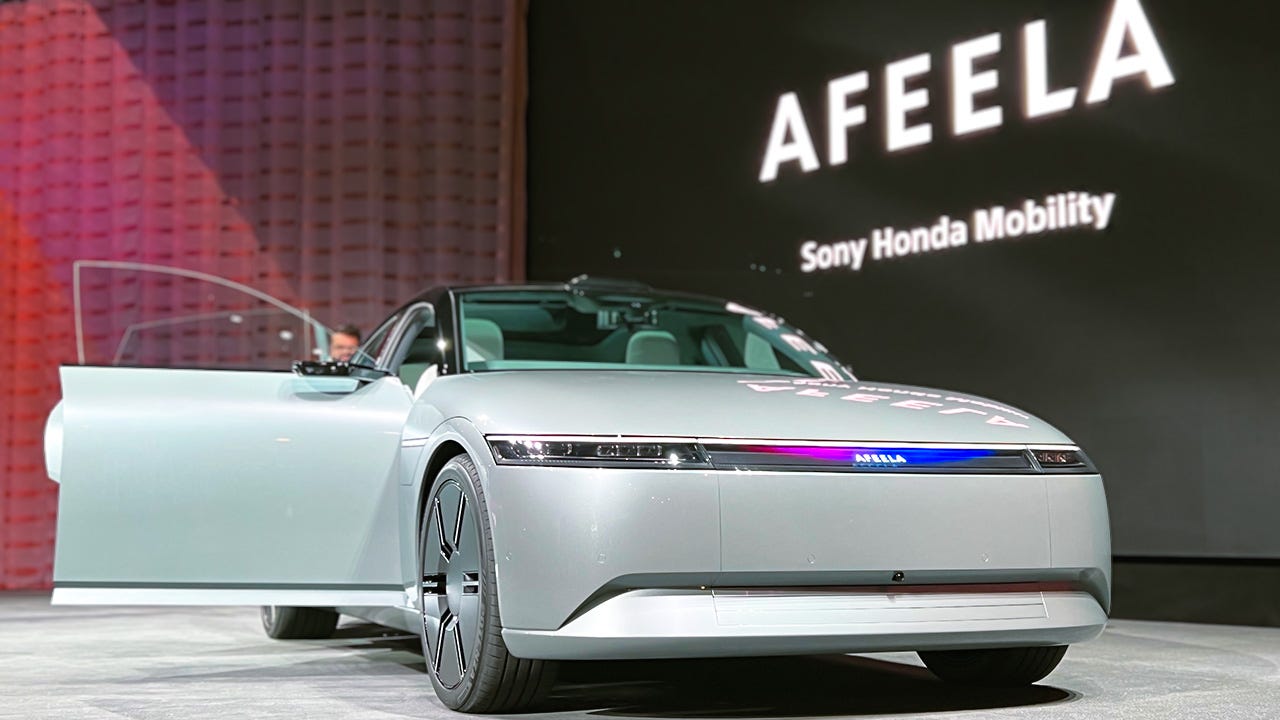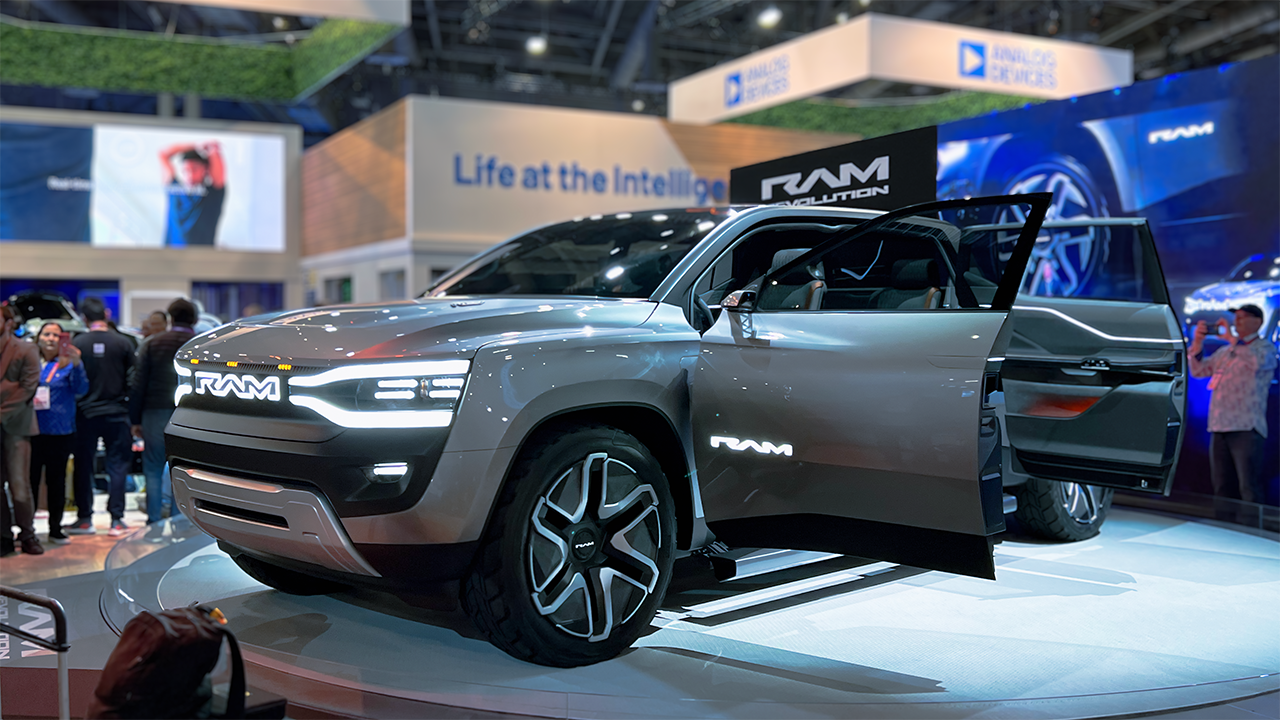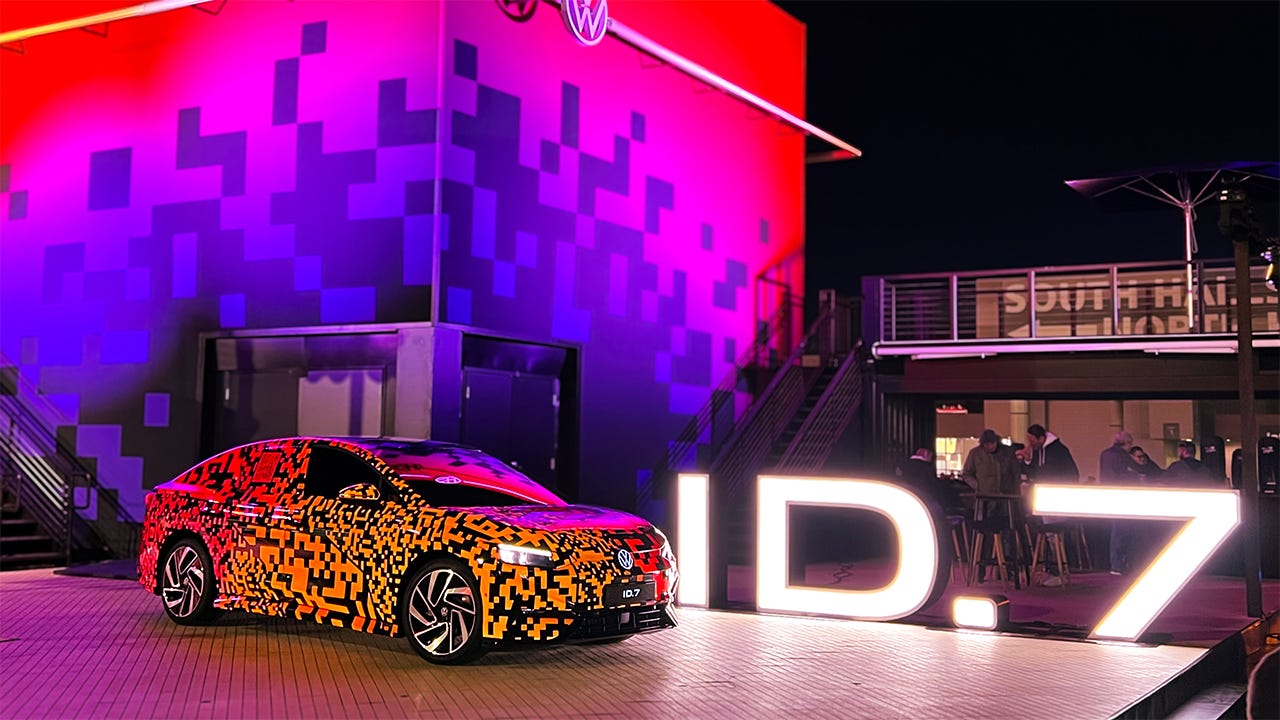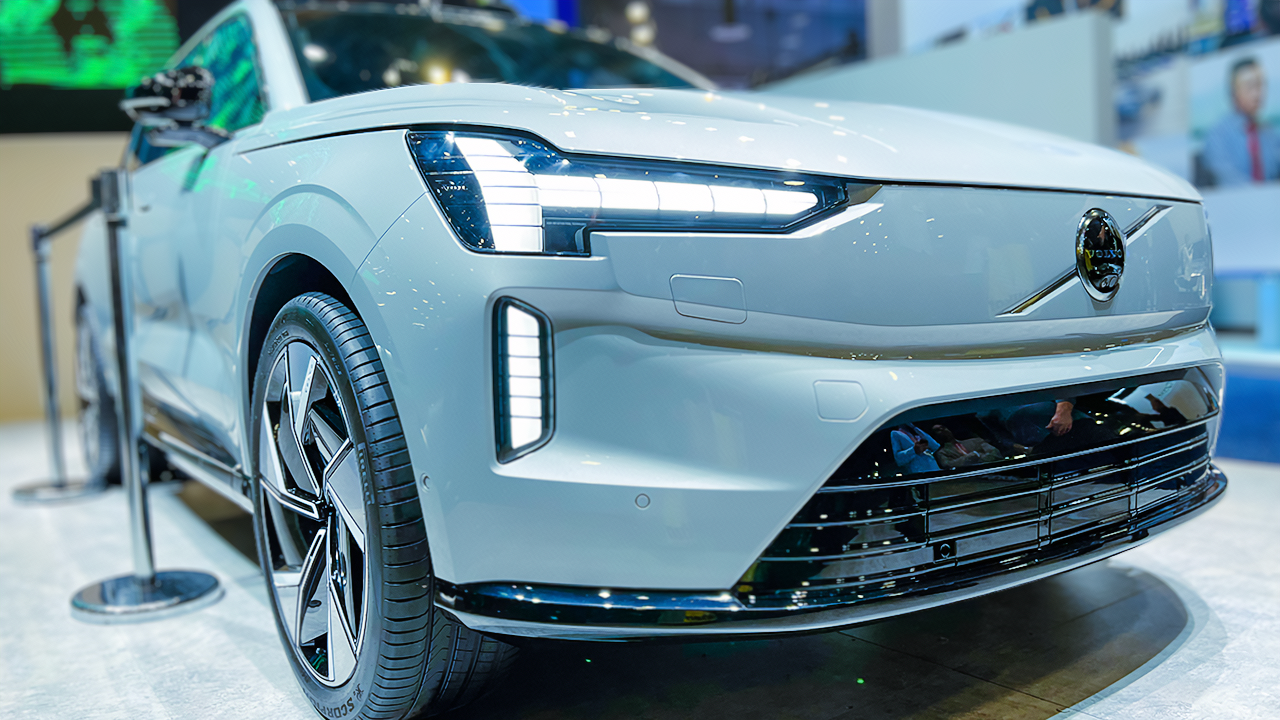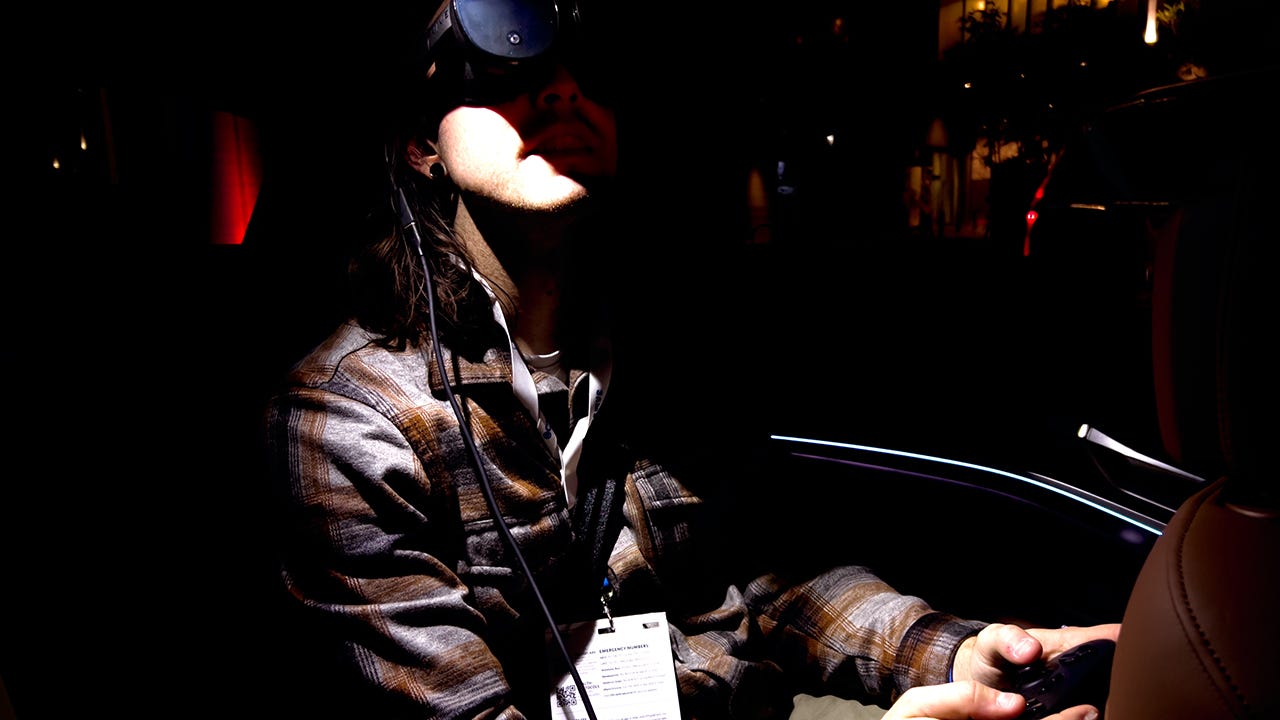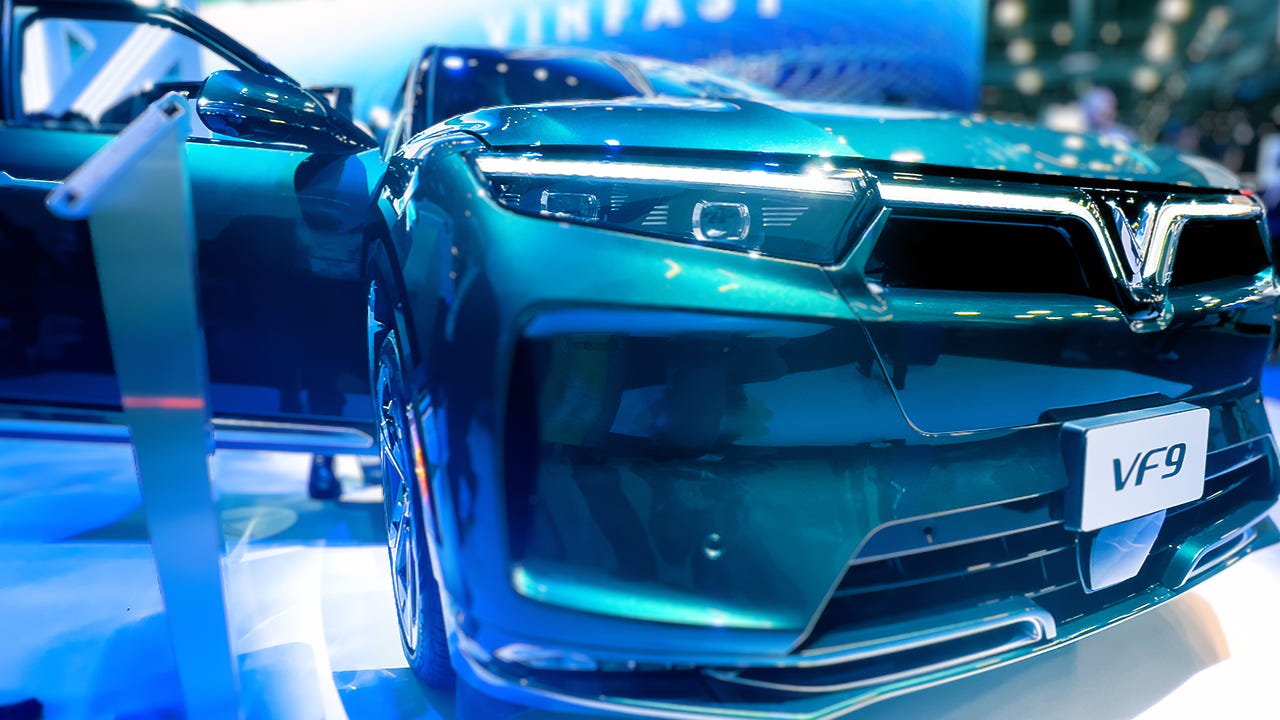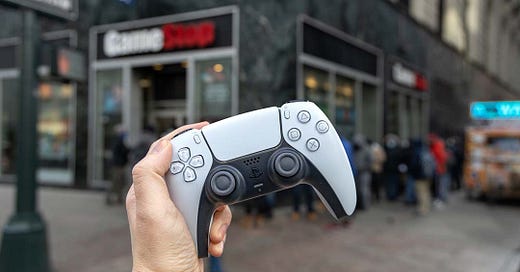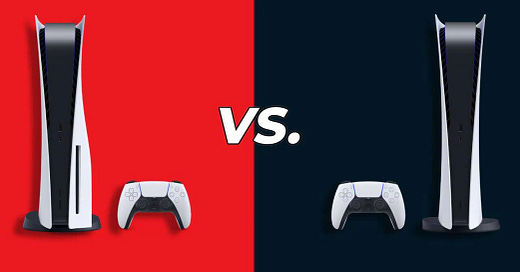
CES 2023 cars recap: BMW i Vision, Afeela, Ram 1500 Revolution and more
With BMW, Sony Honda and Ram revealing EV plans, cars dominated CES 2023
➡️ The Shortcut Skinny: CES 2023 cars
🎰 3 concept cars from major brands were among the main attractions at CES
🚙 BMW introduced i Vision Dee and its Neue Klasse design language
🔋 Sony and Honda are co-developing a premium car brand called Afeela
🛻 Ram has a name for its electric truck concept – and some ambitious ideas
🪖 VW’s ID.7 sedan is a car-first competitor to the Tesla Model 3
Cars were abuzz at CES 2023, with Jalopnik going as far as calling it the “world’s most important auto show.” Taking place between January 5–8 for the general public, the Las Vegas convention was filled with ambitious concepts – from flying “cars” that were pretty much just helicopters with extra steps to supercharged autonomous racing. Much like the rest of the event, cars were scattered across the Strip, from the West Hall of the Las Vegas Convention Center to The Venetian hotel.
But unlike the Consumer Electronics Show of yesteryear, I stood mere inches away from never-before-seen vehicle concepts unveiled by three major car companies: Honda, BMW and Chrysler. As I reported ahead of the show, Sony and Honda showed off the product of their joint venture, Afeela. BMW brought back the color-changing car concept from last year with a new body (and voice). And Chrysler uncaged its electric Ram pickup truck.
If it wasn’t already clear, it couldn’t be more apparent the future of cars is powered by batteries that weigh over a ton and cost more than ten grand. It’s a small price to pay for cleaner air and reduced environmental harm. And no, EVs aren’t worse for the planet than gas-powered cars. We’re decreasingly reliant on greenhouse gases for manufacturing and electricity generation alike due to unprecedented growth in renewable energy, as nations around the world strive for net zero emissions.
Four states including California, New York and most recently, Oregon, have agreed to ban the sale of new gas-powered vehicles by 2035. Washington is taking it a step further, making 2030 its hard deadline. More states including Delaware are expected to sign off on similar legislation in the coming months, and I wouldn’t be surprised to see a federal bill passed sometime along the way. As a result, car manufacturers and even dealerships once resistant to change are now acting quickly to adapt.
We kept this page updated throughout the show as announcements were made. For more on the latest in automotive tech, follow The Shortcut on Twitter as well as myself on Twitter and on Instagram.
BMW: i Vision Dee
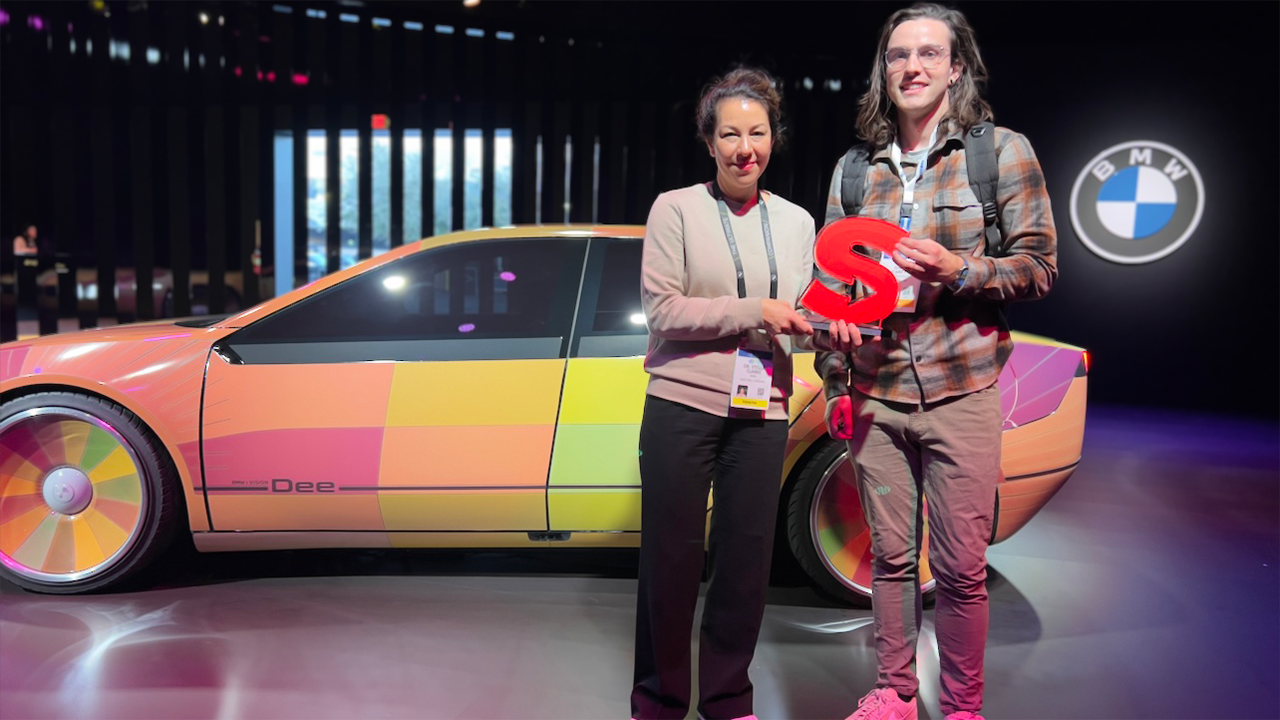
After a series of puzzling social media posts that involved pretending to hack its own accounts, David Hasselhoff in a Pontiac and Arnold Schwarznegger wearing a mocap suit for some reason, I can’t say the chaos didn’t make me curious about what BMW had planned for CES 2023. In the end, I was charmed enough to give its latest concept car our first CES 2023 Award for Best Automotive tech.
At the center of it all was Dee, which turned out to be the German automaker’s AI-infused infotainment platform meant to power its vehicles moving forward, beginning with the 2025 fleet. The i Vision Dee concept sedan was an exceptional way to showcase not only BMW’s retooled virtual assistant, but also give its color-changing paint tech a second look.
The i Vision Dee represents a new design language for BMW – one it’s appropriately calling Neue Klasse, the literal German translation of “New Class.” Cars released as part of the i Vision family will trot out full-windscreen HUD interfaces, side window displays and other novel ideas I’m sure will have no trouble passing regulatory standards, especially in the US.
Sony and Honda: Afeela
Since teaming up to form a company together in June 2022, Sony and Honda were tight-lipped about what the two Japanese conglomerates had in store. It’s now evident they were waiting for CES 2023 to make a splash. Afeela is the inaugural concept from Sony Honda Mobility and it’s poised to compete with luxury brands like BMW and Mercedes-Benz – and I assume Lexus.
The new brand is powered by Qualcomm Snapdragon processor tech and its infotainment UI is being designed in partnership with Epic Games, leading many to believe, naturally, that it could play the best PS5 games. In fact, Afeela president Izumi Kawanishi said, “It’s technologically possible” for that to be the case.
PS5-compatible or not, we’ll most likely get a closer look at the EV as we approach its 2025 pre-order launch. Afeela is scheduled to release in 2026.
Ram Trucks: 1500 Revolution BEV pickup
The most common complaint I hear about EVs is how long it takes to charge one compared to filling up the tank of a gas-powered car. Eventually, the infrastructure is bound to catch up, but Ram isn’t waiting for someone else to make the first move.
Crysler’s Ram 1500 Revolution BEV is the acclaimed truck brand’s first electric pickup. While rumors suggested the Revolution would pack three motors at 443 horsepower apiece, as reported by Popular Science via Mopar Insiders, we still don’t know much about it in earnest, beyond some fancy animated lighting tricks, saloon doors, pass-through midgate and an electrochromic roof. Perhaps most interesting is the fact it’ll also be available as a plug-in hybrid, for those only willing to half-commit.
Ram does have some fascinating intentions for the BEV, though, including a "Shadow Mode” that employs sensors to follow the driver unmanned as they walk. It could also have a projector built-in, for watching movies outside on camping trips and such.
Volkswagen: ID.7 sedan
Ever since the great diesel emissions scandal almost a decade ago, Volkswagen has been one of the more committed legacy car brands in the move to electric. Its first fully electric vehicle, the ID.4 SUV, is affordable by today’s standards and I suspect the ID.7 sedan will follow suit when it launches sometime before 2026.
Although it’s about the size of a Passat, the ID.7 far more resembles a Tesla Model 3. A massive tablet-like display now occupies much of the center console, replacing the physical dials and knobs of the past. Steering wheel buttons, however, remain intact. You can also expect an augmented reality HUD, centralized climate controls and refined voice commands.
The ID.7 boasts impressive range, topping off 434 miles versus the Model 3’s 358-mile cap. We’ll know more when Volkswagen Group shows the final production model in Q2 2023.
Volvo: EX90 SUV
With an affinity for quintessential Scandinavian minimalism, Volvo prides itself on safety. Its chassis are famously built using a special metal galvanizing process that protects against corrosion. More recently, the Swedish company has implemented a speed limiter that tops out at 112 mph.
The Volvo EX90 made its first US appearance at the Luminar booth. Its most fascinating safety component is an eight-camera interior radar system that prevents the doors from locking when a child or pet is in the car. As part of the company’s mission to reduce the number of Volvo-induced deaths to zero, the in-car radar is designed to mitigate the risk of heatstroke or hypothermia.
Starting around $80,000, the price difference over the EX90’s $56,000 gas-powered equivalent XC90 is steep, even when taking EV tax credits into account. Fingers crossed there’s more to it than meets the eye when it comes stateside in 2024.
Audi: Holoride in-car VR
Also part of Volkswagen Group, Audi didn’t show off a new car at CES 2023, but that doesn’t mean it came empty-handed. Instead, the German luxury brand demonstrated the Holoride VR platform it debuted for Audi vehicles in 2019. Holoride gives new meaning to the term “backseat driver.”
Wearing a VR headset, rear-cabin passengers can explore dynamic virtual environments impacted by the trajectory of the car. In one demo, I simulated the experience of being nine years old in 1995, playing my Game Boy on the way to grandma’s house as my parents bickered in the front. In another, I watched Russian Doll on German Netflix, shown on a massive curved display.
CES badge holders could experience Holoride for themselves in the back of an Audi E-tron or E-tron Sportback at the Waldorf Astoria hotel in Las Vegas from January 4–6.
VinFast: VF 6, VF 7, VF 8 and VF 9
VinFast is accelerating at full throttle. The Vietnamese EV maker filed to for IPO on the US stock market last month before even releasing its first car in the states. With the initial VF 8 deliveries reaching early adopters as we speak, CES 2023 gave the company a chance to evangelize its vehicles to those in attendance who couldn’t make it out to LA in November (aka me).
VinFast’s trade show fleet has apparently grown since the LA Auto Show, with the company showcasing the VF 8 and VF 9 models as well as the previously exhibited VF 6 and VF 7. While the VF 8 has been available in Vietnam since early 2021 and is now making its way westward, the VF 6, 7 and 9 are still in development. All four VinFast vehicles are SUVs ranging from crossovers to five- and seven-seaters.
Mercedes-Benz: Mercedes me Charge network
“Tech to Desire” was the theme of the Mercedes-Benz exhibit at CES 2023, and that mostly translated to minor additions to its MBUX infotainment system. For instance, Mercedes is partnering with Zync, a “passenger experience company” working on bringing things like news, gaming and sports highlights to the existing MBUX platform.
Mercedes also has updates on its EV strategy. Working together with ChargePoint, it’s taking on Tesla’s Superchargers with a high-speed charging network of its own. The best part? Non-Mercedes owners can use it, too, though Benz owners will have exclusive access to pre-booking spots.
That said, the biggest news to come out of Mercedes should have been its collaboration with an “exciting entertainment brand” it purported would be “reinventing an icon of pop culture.” That turned out to be Superplastic and its take on Wackeldackle. No, I will not elaborate.
Nvidia: Omniverse and GeForce NOW
At the turn of the 20th century, Ford imparted the moving assembly line to automotive manufacturing, speeding up the process of building cars to meet increasing consumer demand. Now, with EVs in their infancy and the internal combustion engine not totally obsolete, the industry finds itself at odds with the infrastructure that constrains it.
Nvidia is responding to production woes by bringing Omniverse – its real-time 3D design collaboration software – to car development. Working together with its new DRIVE Sim platform, carmakers can test and compare prototypical features like UX placement and steering wheel design in a real-time virtual reality environment. Mercedes-Benz will be the first to utilize the software for vehicle assembly.
Like Tesla and Sony, Nvidia is also experimenting with in-car gaming solutions. Purchasing certain vehicles from BYD, Polestar and Hyundai will grant you the ability to play triple-A games through GeForce NOW.

